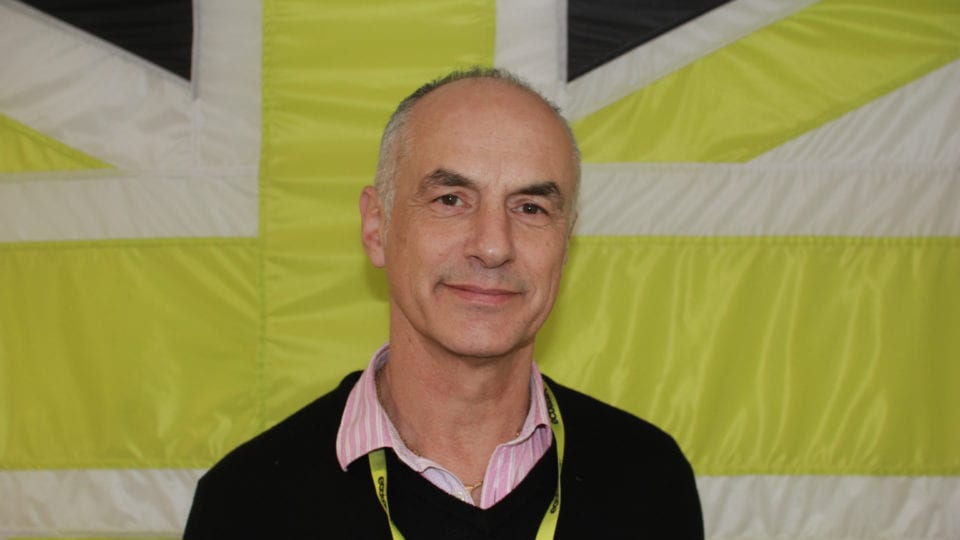A level playing field
Mark Meyrick, head of smart grids at renewable energy supplier Ecotricity, discusses the challenge of DNOs and DSOs maintaining impartiality in the evolving environment of flexibility and ancillary services.
19th February 2018 by Networks

There has been much written in the trade press recently about whether (or not) distribution network operators (DNOs) and distribution system operators (DSOs) should own storage, as well as their requirement for flexibility to help create ‘the smart grid’ – a system fit for the new power landscape.
The argument being deployed by some in the DNO space, is that there is logic in DNOs being allowed to own limited amounts of storage, if it’s the right solution for customers and the market isn’t providing it at a sensible price. All of which begs the question as to what ‘limited’ might look like, never mind what ‘right’ means in this context, as well as ‘sensible price’. An independent aggregator or supplier contemplating investing in storage might at this stage get somewhat twitchy, given their reliance on DNOs for grid access, about suddenly being in competition with them.
Batteries are part of the solution to the challenges of a grid that isn’t very smart, and the ancillary services (AS) procured by the grid are sticking plaster solutions to address that. A whole raft of the private sector’s business models are predicated on finding ways to meet the grid’s AS demands, and this is what encourages innovation – having that multitude of players involved. And each time we have to do the planning for a battery siting, we have to get the DNO/DSO to grant us grid access. Put them in the same game i.e. competition, and they can prevaricate on awar ding grid access, whilst they cherry pick the best grid access points for their own assets. That is the main reason they can’t be allowed to compete with the private sector – it would really not be a level playing field.
A cleaner and more transparent process would be for independent storage owners to develop their storage, and the DNO to contract any storage needs from that independent. Their grid access charges would then reflect the level of their need, which would introduce an element of certainty into the project development process which isn’t there now, as indicative offers may change substantially within a grid supply point (GSP) depending on what goes on within that GSP during the development timeframe.
This ‘level playing field’ issue is also the problem with allowing DNOs/DSOs to compete with suppliers (or aggregators) for their customers’ flexibility, and again the arguments deployed by the DNO community are specious. We’re told they need this flexibility to enable the creation of a smart grid. In actual fact they need this flexibility to fix the problem of their grids not being smart. If the grids were truly smart, the necessary digital interface, with customers all on smart meters with attendant incentives, would improve efficiency, reduce consumption and cost. But instead, ahead of this, DNOs try and procure demand side response from the customers of electricity suppliers, so as to help manage load and avoid network reinforcement. So in actual fact they are patching up an un-smart grid. They should be upgrading the grid so as to enable the truly smart grid of the future which will enable EVs, and a community of prosumers who are able to exchange energy and flexibility with each other.
Comments
Login on register to comment
Related content

Power
The future for vegetation management
Why networks should focus on data not trees to overcome the costly challenges involved in vegetation management

Power
An unprecedented opportunity for change
Why short interruptions will matter in RIIO-ED2 and how to address them.

Power
Time for less talk and more action on decarbonisation
Core "oven-ready" solutions to decarbonising heat and transport exist today and should be implemented without delay, says WPD's future power networks expert.
Related supplier content
![‘Learning by doing’ on the road to net zero [test product]](https://networksonline.s3.amazonaws.com/products/images/3.jpg)
People & Skills
‘Learning by doing’ on the road to net zero [test product]
DSO director Andrew Roper discusses 'Learning by doing'

Power
Load patterns and lockdown: how Covid-19 is impacting electricity networks
Insights into dynamics on the low voltage network as the outbreak unfolds

Downloads
Protect electrical equipment from insulation failure
Insulation faults are a major cause leading to the eventual failure of electrical equipment. Partial discharge (PD) is a very reliable indicator of developing insulation faults. Regular PD testing allows users to detect and analyze PD activity